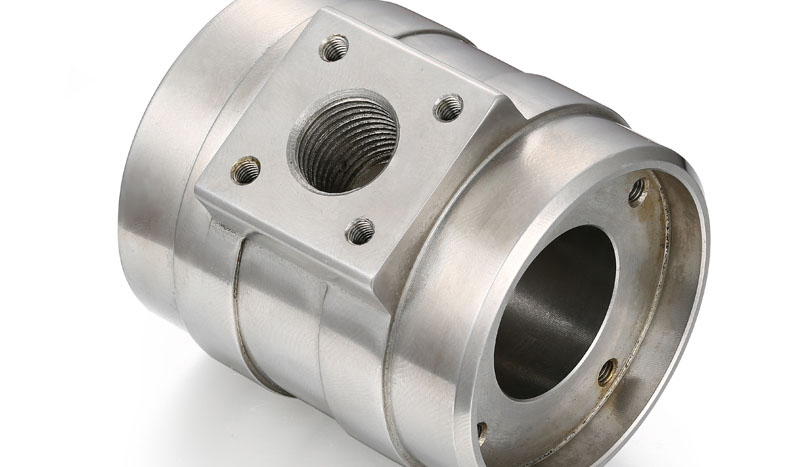In the field of precision machining and mechanical design, terms like “tapped hole” and “threaded hole” are often used interchangeably. However, while they are closely related, subtle differences in definition, process, and application distinguish them—especially when viewed through the lens of manufacturing, engineering drawings, or CNC programming.
Understanding the nuances between tapped and threaded holes is essential for engineers, machinists, and quality inspectors to ensure clear communication, accurate interpretation of technical drawings, and reliable functional performance. Threaded holes are a small but essential detail in CNC part design. If they’re not specified correctly, they can lead to fit issues, tool breakage, or even part failure during assembly. This article explores the differences between tapped holes and threaded holes, their creation methods, applications, and design implications.
What Is a Threaded Hole?
A threaded hole refers broadly to any hole that has internal threads—regardless of how those threads were formed. It is a general term that describes the final condition of the hole, which is capable of receiving a screw, bolt, or threaded insert. Threaded holes can be created through different methods, including:
- Tapping (the most common method)
- Thread milling
- Form tapping (cold forming)
- Thread rolling or chasing (in special cases)
In engineering documentation, when a drawing notes “threaded hole,” it refers to the functional feature—indicating that a mating threaded fastener can be installed.
What Is a Tapped Hole?
A tapped hole is a specific type of threaded hole, where internal threads are cut (or formed) using a tool called a tap. Tapping can be done by hand (in simple setups) or with CNC machines for more precise, repeatable results.
- The tapping process typically includes:
- Drilling a hole to the correct diameter (known as the tap drill size)
- Using a tap to cut the threads into the hole
Deburring or chamfering the hole for easier screw engagement
So, in essence, all tapped holes are threaded holes, but not all threaded holes are necessarily tapped—because there are other ways to create threads.

Tapped Hole vs Threaded Hole: Key Differences
1. Terminology and Context
Tapped Hole refers specifically to the process or method used to create the threads (cutting or forming with a tap).
Threaded Hole refers to the resulting geometry or feature, regardless of how it was made.
In manufacturing drawings, “Tapped Hole” may be called out when the process is critical (e.g. for material compatibility), while “Threaded Hole” may be used when only the result matters.
2. Creation Methods
Tapped holes use a tap—a physical tool that either cuts threads (cutting tap) or forms them (forming tap).
Threaded holes can also be made via thread milling, where a CNC machine uses a circular toolpath to mill the thread geometry—especially useful in hard materials, large diameters, or blind holes with interrupted threads.
3. Material and Geometry Considerations
Tapping is faster and simpler for small, uniform parts and soft-to-medium materials (aluminum, brass, mild steel).
Thread milling is better for difficult-to-machine materials, deeper threads, or situations requiring high precision and better chip evacuation.
In hard plastics, thread forming taps can be preferable over cutting taps to avoid cracking.
4. Design Interpretation
On engineering drawings:
“M6 x 1.0 tapped hole” may imply a specific process (tap required).
“M6 x 1.0 threaded hole” communicates the design intent—regardless of the method used to produce it.
When working with tight tolerance applications or specialty threads, the exact method of thread generation may be specified for quality control.
Applications and Use Cases
Tapped Holes are most common in everyday manufacturing and general-purpose components where thread integrity and basic tolerances are acceptable. Examples include:
- Mounting brackets
- Electrical enclosures
- Machine bases
- Low-load structural components
Threaded Holes via Milling or Other Methods are common in:
- Aerospace and medical applications requiring precise threads
- High-value parts where tool breakage risk must be minimized
- Large-diameter holes or odd-shaped holes
- CNC setups where multiple operations are consolidated for efficiency
How to choose the appropriate threading method for your parts
Choosing the best threading method first requires understanding your material and the required depth of the thread. Tapping is a reliable choice for aluminum shells and standard through holes, but may encounter difficulties in hardened or brittle metals. For blind holes or high-precision parts, thread milling usually provides better control and reduces the risk of tool failure.
Assuming you are processing titanium alloy parts, tapping may cause parts to break or even be scrapped. In this case, thread milling can provide a smoother cutting process and more accurate results. On the other hand, if you use aluminum and want to achieve higher strength threads without generating chips, thread forming is an ideal choice.
Conclusion
While the terms “tapped hole” and “threaded hole” are closely linked, understanding the distinction helps improve communication between designers, machinists, and quality control teams. For designers, choosing the right terminology ensures that manufacturing teams apply the correct method. For machinists, knowing the production intent can inform tooling and process decisions.



